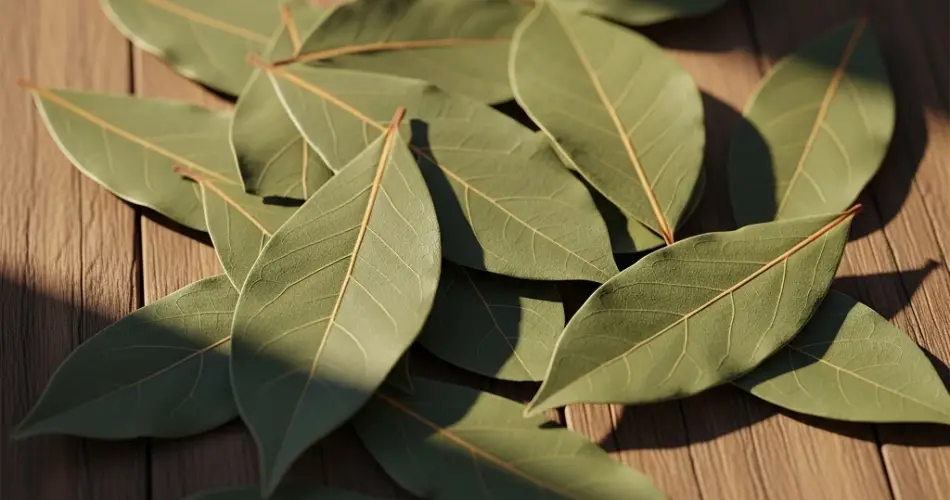Bay leaves, known for their distinct aroma and rich flavor, are a staple in many kitchens around the world. Growing a bay laurel (Laurus nobilis) plant at home offers not only a ready supply of fresh bay leaves but also a beautiful, evergreen addition to your garden or patio. To ensure you can continue harvesting for years to come, it’s essential to learn the correct techniques for picking bay leaves without harming the plant.
Understanding the Bay Laurel Plant
Bay laurel is a slow-growing, hardy shrub or small tree that thrives in warm climates. It prefers full sun but can also do well in partial shade. The leaves are thick, dark green, and leathery with a shiny finish. Although bay laurel can reach a considerable height outdoors, it adapts well to container growing, making it ideal for small gardens or indoor cultivation.
The leaves are most aromatic once they’ve matured. Mature leaves contain higher levels of essential oils, which are responsible for their flavor and fragrance. Harvesting too early not only affects flavor but may also impact the plant’s overall development.
When to Harvest Bay Leaves
The best time to harvest bay leaves is during the plant’s active growing season, typically from late spring to early fall. Leaves should be harvested once they are mature but still healthy. Mature leaves are usually deeper green and firmer than young ones.
Avoid harvesting during winter or when the plant is dormant. This is especially important in colder climates where the plant may be stressed during these months. Waiting until the plant is in its growing phase ensures faster recovery after harvesting.
How to Pick Bay Leaves Safely
To harvest bay leaves without damaging the plant, follow these simple steps:
-
Choose the Right Leaves
Select healthy, mature leaves from different parts of the plant. Avoid taking too many leaves from one branch or section, as this can weaken that part of the plant. Choose leaves that are dark green and firm to the touch. -
Use Clean, Sharp Scissors or Pruners
Always use clean tools to avoid introducing disease. A clean cut heals faster and reduces the risk of infection. Snip the leaf at its base, close to the stem, without cutting into the main branch. -
Avoid Overharvesting
Do not remove more than 20–30% of the plant’s foliage at one time. Overharvesting can stress the plant and slow its growth. Allow the plant time to regenerate before collecting more leaves. -
Harvest in the Morning
Early morning is the ideal time to harvest herbs like bay leaves. At this time, the essential oil concentration in the leaves is highest, especially if the weather has been dry. Morning harvests also give the plant time to recover during the rest of the day.
Drying and Storing Bay Leaves
Fresh bay leaves have a subtler flavor compared to dried ones, so many gardeners prefer drying their harvest for later use. Here’s how to do it properly:
-
Air Drying
Bundle the leaves and hang them upside down in a warm, dry, and shaded place with good air circulation. It may take 1–2 weeks for the leaves to fully dry. -
Oven Drying
If you need to dry them quickly, place the leaves on a baking tray in a single layer and dry them in an oven at the lowest temperature setting (usually around 90°C or 195°F) for 1–2 hours, checking frequently. -
Storage
Once dry, store the leaves in an airtight container in a cool, dark cupboard. Properly dried and stored bay leaves can retain their flavor for up to two years.
Encouraging Healthy Growth After Harvest
To keep your bay laurel plant healthy after harvesting:
-
Water Consistently
Bay laurel prefers evenly moist soil. Avoid overwatering, especially if it’s grown in a container, as this can lead to root rot. -
Prune Annually
Light annual pruning helps maintain the plant’s shape and encourages bushier growth. Remove any dead or crossing branches to allow better air circulation. -
Feed Sparingly
Use a balanced, slow-release fertilizer during the growing season to support healthy leaf production. Avoid heavy feeding, as bay laurel is not a heavy feeder.
Final Thoughts
Harvesting bay leaves correctly ensures that your plant remains healthy and productive for years to come. With proper timing, clean tools, and careful selection, you can enjoy the full benefits of fresh or dried bay leaves in your cooking without compromising the vitality of your plant. Whether you’re growing bay laurel in a garden bed or a small container, a little care goes a long way in keeping this aromatic herb thriving.



